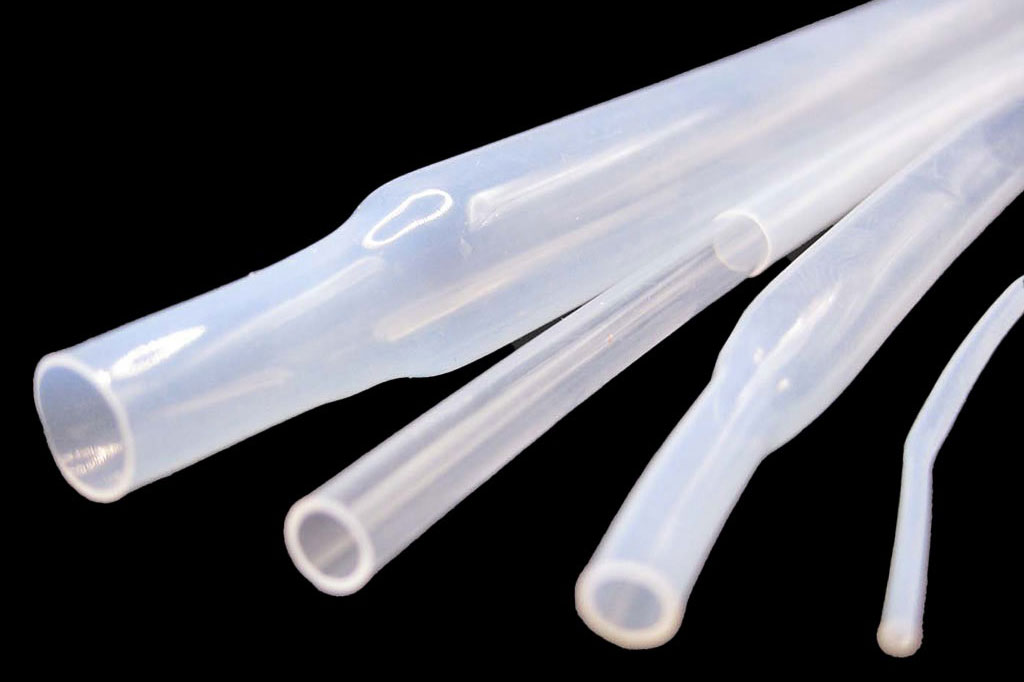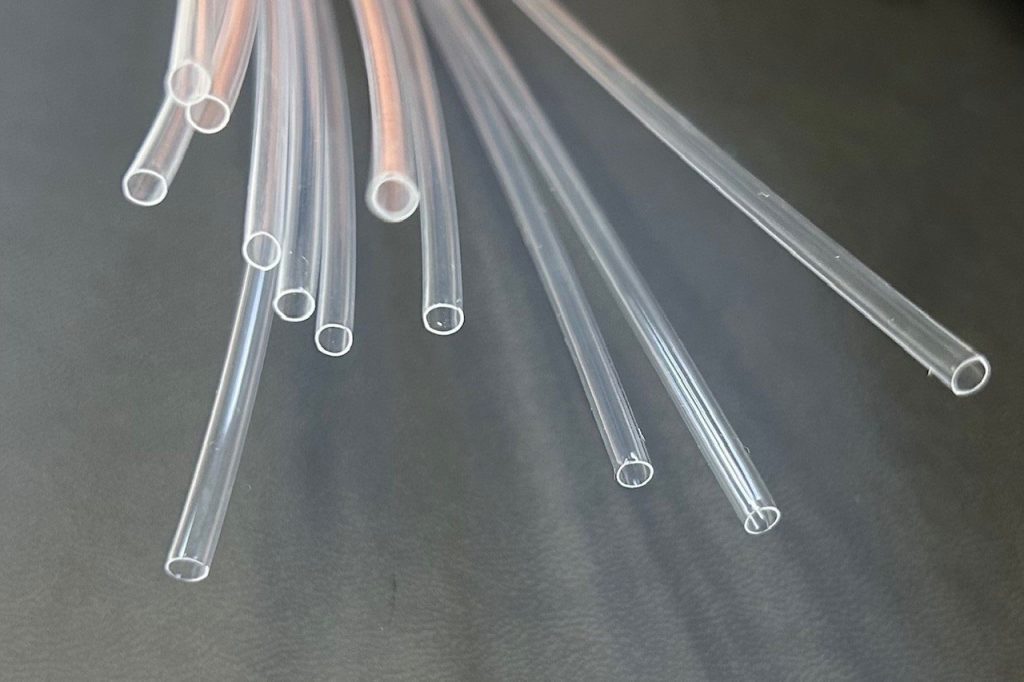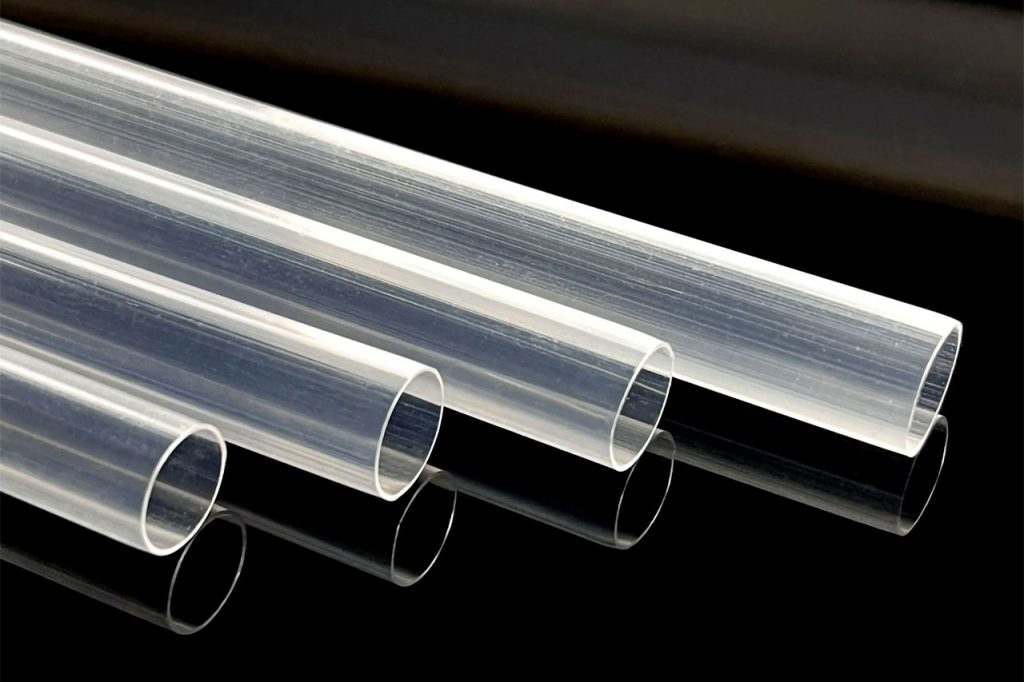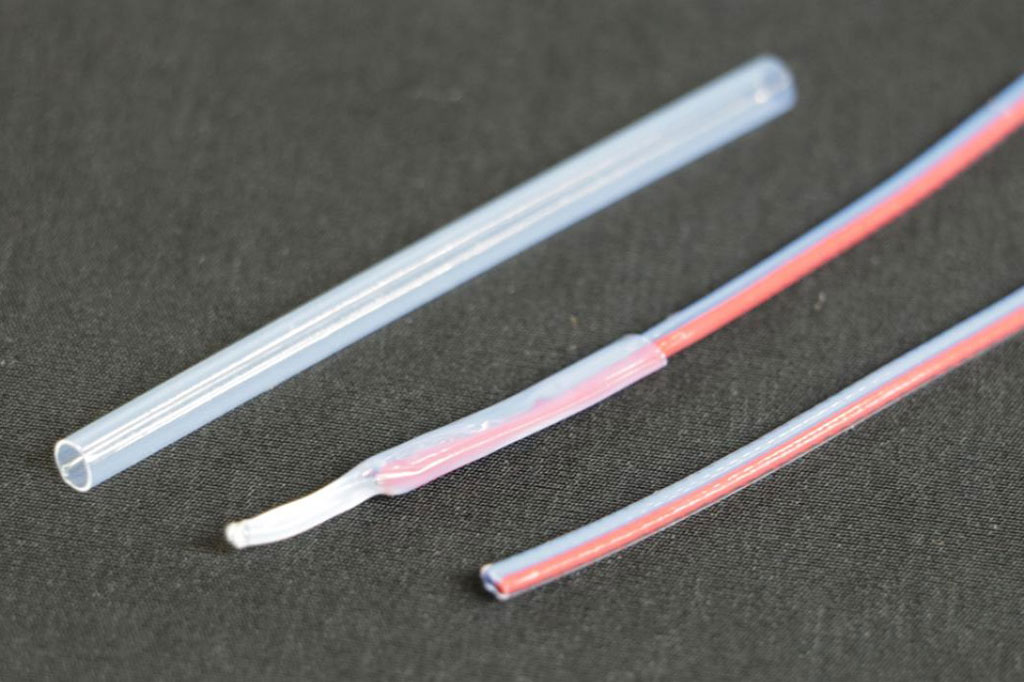Heat shrink tubing is an essential component in electrical, aerospace, medical, and automotive applications, providing insulation, strain relief, and protection from chemicals, abrasion, and environmental factors.
Among the most popular fluoropolymer-based heat shrink materials are PTFE (polytetrafluoroethylene), FEP (fluorinated ethylene propylene), and PVDF (polyvinylidene fluoride).
In this article, we will explore their properties, advantages, limitations, and application suitability to help you select the ideal tubing for your project.
1. Overview of Fluoropolymer Heat Shrink Tubing
Fluoropolymers are prized for their exceptional chemical inertness, wide operating temperature ranges, and electrical insulation properties. When fabricated into heat shrink tubing, these materials shrink radially upon exposure to heat (typically 200–300 °C), conforming tightly around wires, connectors, or assemblies. Key performance attributes include:
- Thermal Resistance: Ability to withstand high continuous and intermittent temperatures.
- Chemical Compatibility: Resistance to solvents, fuels, acids, and bases.
- Mechanical Toughness: Tensile strength, flexibility, and abrasion resistance.
- Electrical Insulation: High dielectric strength and low dielectric constant.
PTFE, FEP, and PVDF represent three points along the trade-off spectrum between maximum thermal/chemical performance and ease of manufacture and cost.
2. PTFE Heat Shrink Tubing
PTFE heat shrink tubing offers exceptional thermal stability, chemical resistance, and electrical insulation. It is ideal for high-temperature and harsh chemical environments, such as aerospace, medical, and industrial applications.

2.1 Material Properties
- Operating Temperature: −200 °C to +260 °C continuous
- Dielectric Strength: ~2.5 kV/mm
- Tensile Strength: 20–30 MPa
- Chemical Resistance: Virtually all chemicals, including aggressive acids, solvents, and strong bases
- Coefficient of Friction: Extremely low (self-lubricating)
- Shrink Ratio: Up to 2:1
2.2 Advantages
- Exceptional Thermal Stability: One of the highest continuous use temperatures among plastics.
- Ultimate Chemical Inertness: Suitable for the harshest chemical environments (e.g., chemical processing, laboratories).
- Low Friction: Ideal where sliding contact or wear resistance is needed.
- Non-Stick Surface: Resists fouling and buildup of residues.
2.3 Limitations
- Poor Mechanical Toughness: PTFE is somewhat soft and can cold-flow under stress over time.
- Difficult Processing: Requires high heat to shrink; careful temperature control prevents pinholes or burning.
- Cost: Typically the most expensive of the three materials.
2.4 Typical Applications
- Chemical processing instruments
- Aerospace wiring harnesses exposed to extreme temperatures
- Medical device components requiring sterilization (e.g., steam, EO)
- High-performance electrical insulation
3. FEP Heat Shrink Tubing
FEP heat shrink tubing provides excellent chemical resistance, optical clarity, and lower shrink temperatures than PTFE. It is well-suited for applications requiring visibility, flexibility, and reliable insulation in moderate to high temperatures.

3.1 Material Properties
- Operating Temperature: −200 °C to +200 °C continuous
- Dielectric Strength: ~2.1 kV/mm
- Tensile Strength: 25–28 MPa
- Chemical Resistance: Excellent; resists most acids, solvents, and fuels
- Optical Clarity: Translucent to clear
- Shrink Ratio: Up to 3:1
3.2 Advantages
- Ease of Processing: Lower shrink temperature (~150–200 °C) makes it user-friendly with conventional heat guns.
- Good Balance of Properties: Strong dielectric performance, chemical resistance, and mechanical strength.
- Transparency: Enables visual inspection of underlying components or wire markings.
- Cost-Effective: Generally less expensive than PTFE.
3.3 Limitations
- Lower Maximum Temperature: Limited to around +200 °C continuous, unacceptable for some extreme-heat applications.
- Slightly Lower Chemical Resistance: While still excellent, a few fluorinating agents or molten alkali metals may attack FEP at high temperatures.
3.4 Typical Applications
- General electronic insulation and wire bundling
- Automotive connectors and sensors
- Aerospace secondary insulation
- Chemical plant instrumentation where clarity is beneficial
4. PVDF Heat Shrink Tubing
PVDF heat shrink tubing combines good chemical resistance with superior mechanical toughness and abrasion resistance. It’s well suited for industrial machinery wiring, automotive fuel‐line protection, and any application demanding durable, impact-resistant sleeving.

4.1 Material Properties
- Operating Temperature: −40 °C to +150 °C continuous (intermittent up to +175 °C)
- Dielectric Strength: ~1.8 kV/mm
- Tensile Strength: 35–45 MPa
- Chemical Resistance: Excellent for most acids, fuels, and oils (weaker than FEP/PTFE against strong bases)
- Mechanical Toughness: High abrasion and impact resistance
- Shrink Ratio: Up to 2:1
4.2 Advantages
- Superior Mechanical Strength: Highest tensile strength of the three, with excellent abrasion resistance.
- Good Chemical Resistance: Particularly to hydrocarbons, oils, and fuels.
- Lower Processing Temperature: Shrink activation around 120–160 °C.
- Cost Efficiency: Less expensive than PTFE, often comparable to FEP.
4.3 Limitations
- Lower Thermal Limit: Unable to sustain the very high temperatures that FEP or PTFE can withstand long-term.
- UV Sensitivity: Prolonged UV exposure may cause some embrittlement unless UV-stabilized grades are used.
4.4 Typical Applications
- Automotive fuel and oil lines
- Wiring in industrial machinery
- Abrasion‐resistant sleeving for cable harnesses
- General‐purpose insulation where mechanical durability is paramount
5. Comparative Summary
| Property / Feature | PTFE Heat Shrink Tubing | FEP Heat Shrink Tubing | PVDF Heat Shrink Tubing |
|---|---|---|---|
| Max Continuous Temp | +260 °C | +200 °C | +150 °C (intermittent +175 °C) |
| Shrink Temp Range | 200–300 °C | 150–200 °C | 120–160 °C |
| Dielectric Strength | ~2.5 kV/mm | ~2.1 kV/mm | ~1.8 kV/mm |
| Tensile Strength | 20–30 MPa | 25–28 MPa | 35–45 MPa |
| Chemical Resistance | Ultimate | Excellent | Very Good |
| Mechanical Toughness | Moderate (cold flow) | Good | Excellent |
| Cost | High | Moderate | Moderate |
| Transparency | Opaque | Clear/translucent | Typically opaque |
6. Selection Guidelines
- Extreme Heat & Chemical Environments: Choose PTFE when continuous operation above 200 °C or exposure to the harshest chemicals is required.
- General Electronics & Visibility: FEP combines ease of use, good thermal resistance, and transparency, making it ideal for most wire-bundling and connector applications.
- Mechanical Durability: Use PVDF for applications demanding high abrasion resistance, impact strength, or lower shrink temperatures in industrial settings.
- Cost Considerations: When budget is a concern but performance must remain high, FEP or PVDF often meet requirements at a fraction of PTFE’s price.

